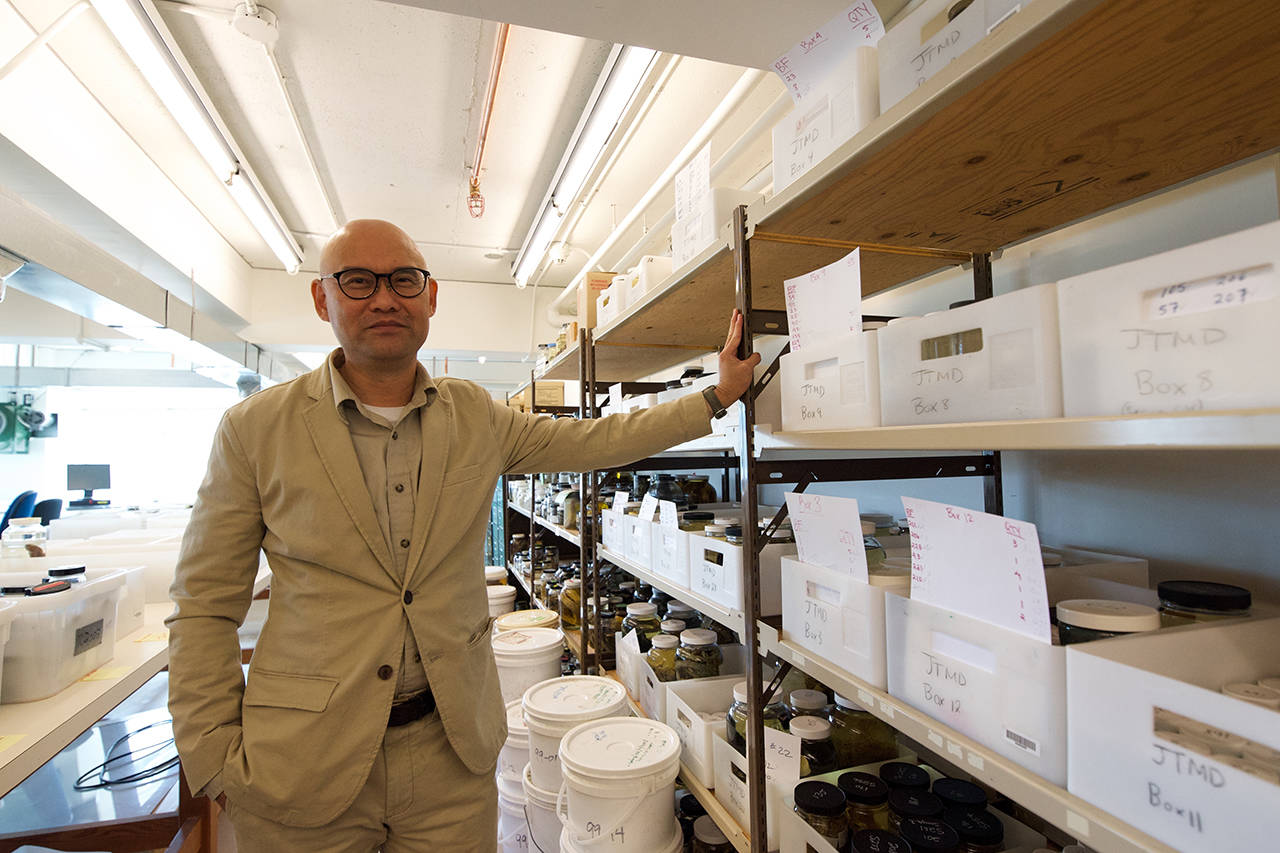In a container the size of a pickle jar sits a rope soaked in formalin, a liquid preservative. From the black rope stretches out spools of brown, spindly arms. While most would mistake the arms to be fronds of seaweed, they actually belong to an animal called a hydrozoa, a relative of jellyfish and coral. This particular species, while unassuming looking, has travelled a great distance, it comes to Victoria from Japan as a result of the 2011 tsunami.
Henry Choong is the curator of invertebrates at the Royal BC Museum, and for the past seven years, he’s also been involved in the Japanese Tsunami Marine Debris Project, a collective effort of more than 80 scientists between Alaska and California. Together, the team has kept track of Japanese debris washing up on west coast shores, collecting and cataloguing the foreign animals and plants attached to pieces of foam, wood, concrete, garbage and more.
ALSO READ: Remains of local mother orca and calf reunited in upcoming exhibit at Royal BC Museum
“The significant part of this project was that this was the first time that such a large-scale transfer had been observed,” Choong said. “We’ve been able to observe how far things can travel, how they’ve bred and how they’ve survived.”
Researchers have collected several thousand pieces of debris, being stringent to only catalogue items that could be factually linked to Japan. This might mean a buoy has Japanese writing on it, or a piece of a house shows characteristics of framing techniques only used in Japan.
“On the debris in total there are more than 289 Japanese species,” Choong said. “Only a small percentage of those were already here, arrived by other means.”
Most of these species were plants and invertebrates, though some samples of fish and insects were also found. While these specimens have arrived over the past eight years, Choong said it’s too early to say if any of these species will be problematic to native plants and animals in the local environment.
“There’s a phenomenon called an invasion lag, and what that means is from the time something arrives to when it’s established can take a long time,” Choong said. “So for the tsunami, it’s far too recent to say what has been established here if any … but it informs us as to the kind of things we need to look out for.”
So far, researchers have already found samples of hydrozoans in mussels transported over from Japan, so now Fisheries and Oceans Canada keeps an eye out for this species when conducting mussel surveys.
ALSO READ: UVic scientist assesses contamination levels from Fukushima aftermath
The majority of the biological collection of the Japanese Tsunami Debris project is now stored at the Royal BC Museum and has been featured in small displays over the years. Some samples will be displayed at a Victoria conference for the North Pacific Marine Science Organization (PICES) from Oct. 16 to 27.
The research is also ongoing; while the level of debris has slowed down since 2011, things still continue to wash ashore. Most of the items sit on the shelf in a display of jars and carefully padded boxes reminiscent of a mythical apothecary, providing a biological record for reference in the future.
“The collection is not the end product of the project,” Choong said. “What you’re seeing is actually the starting point for everything that is to come.”
nicole.crescenzi@vicnews.com
